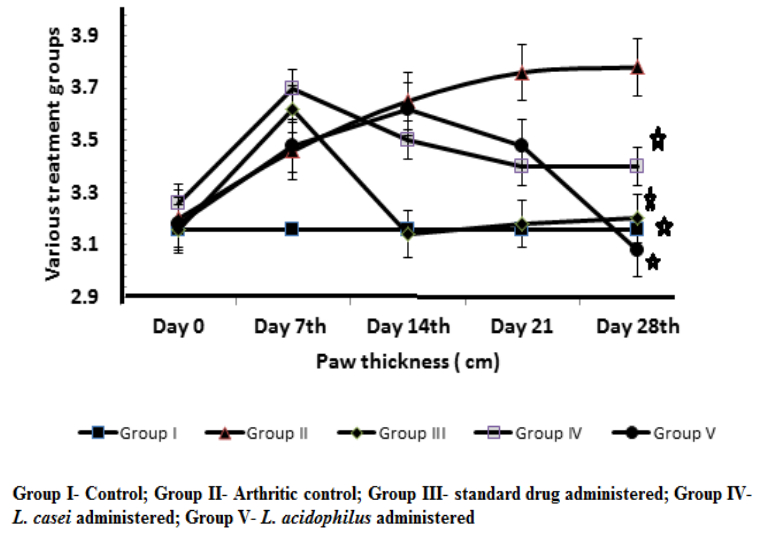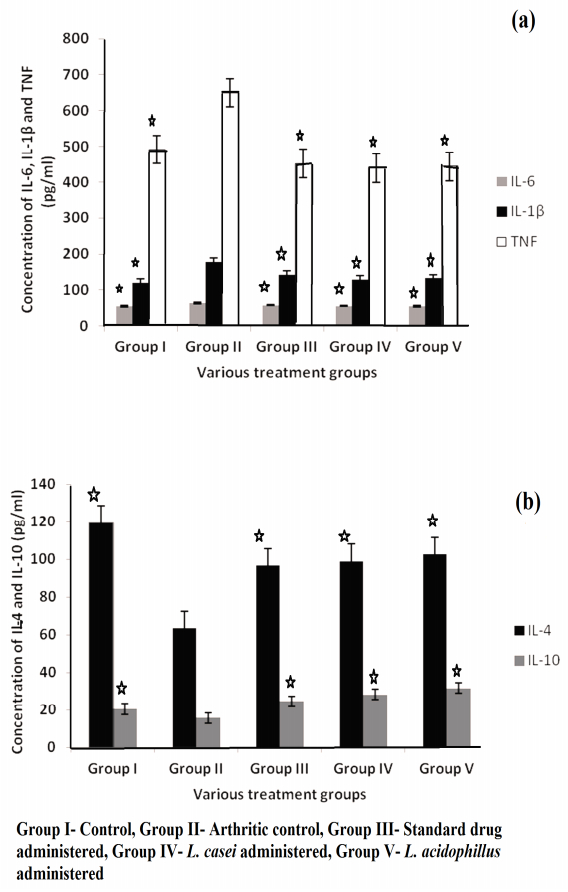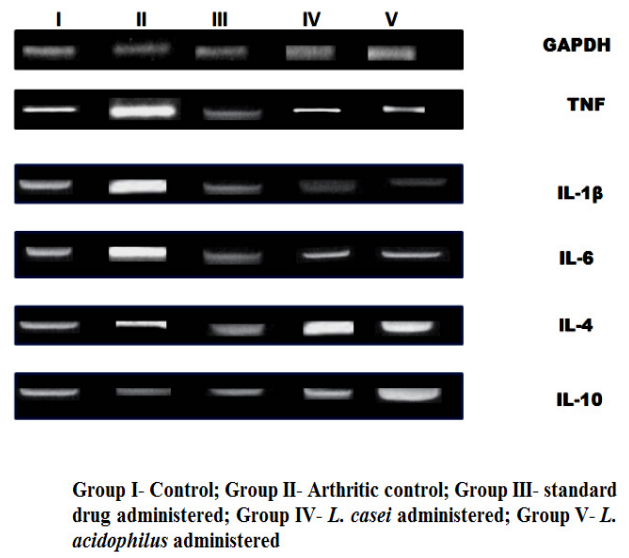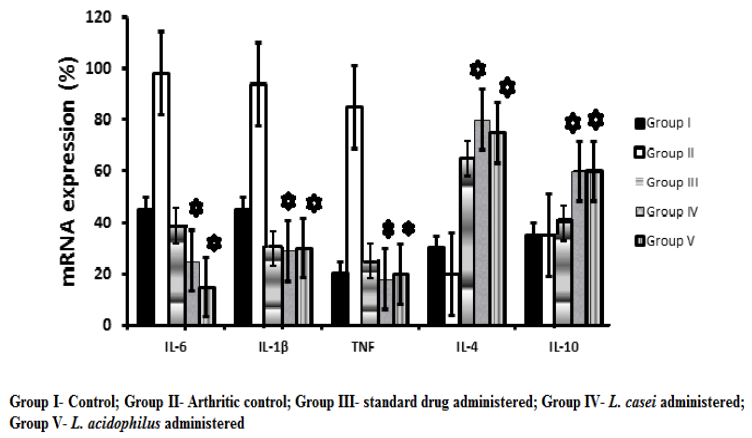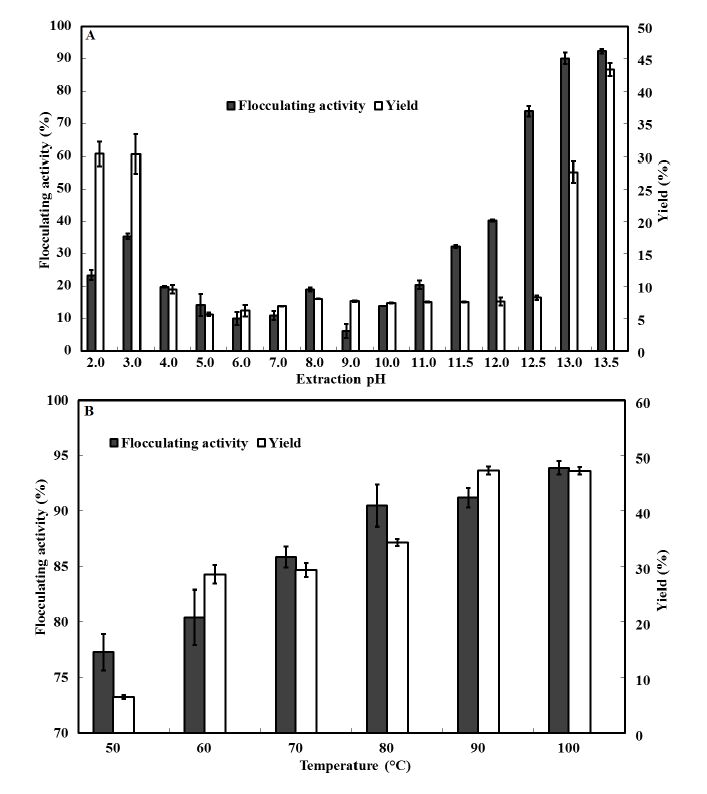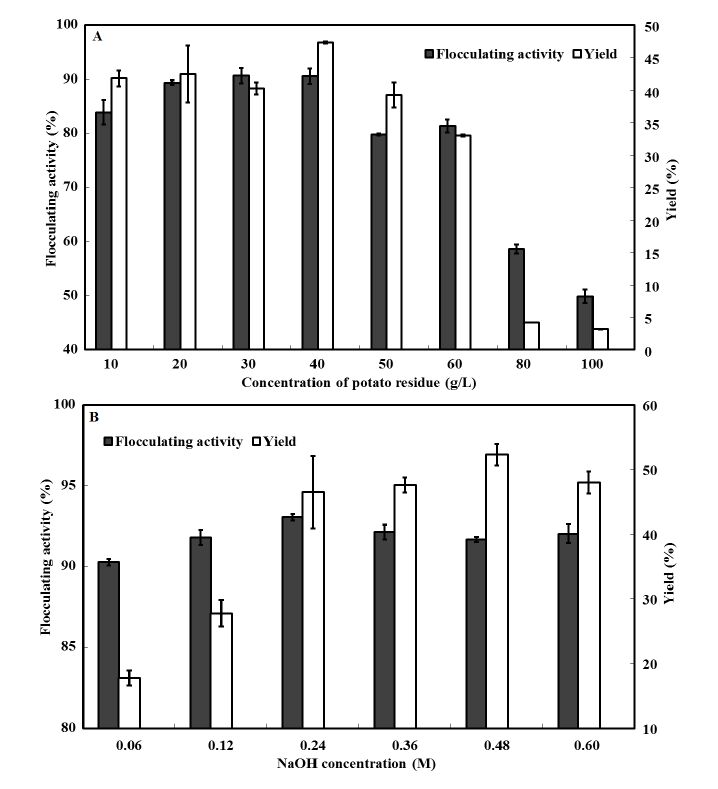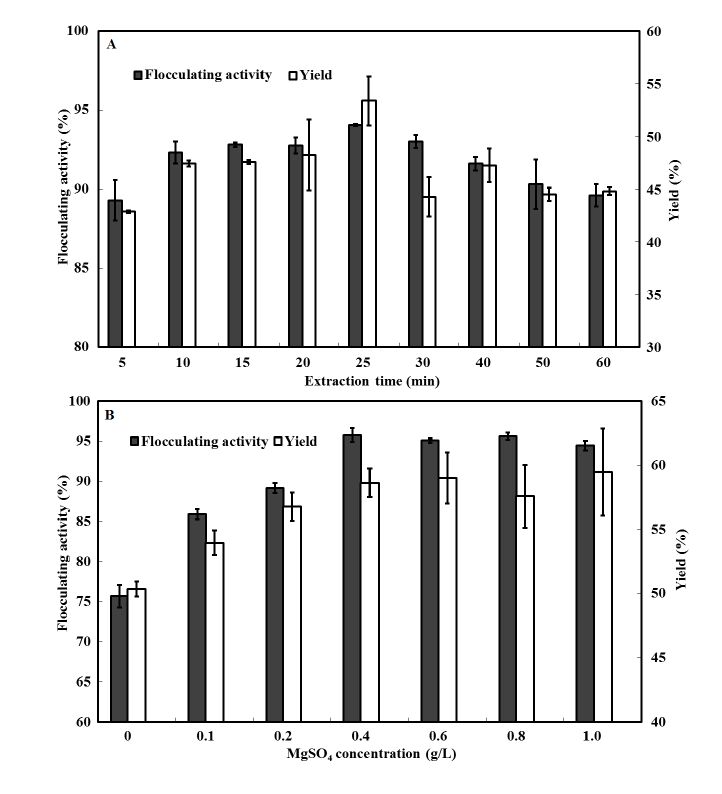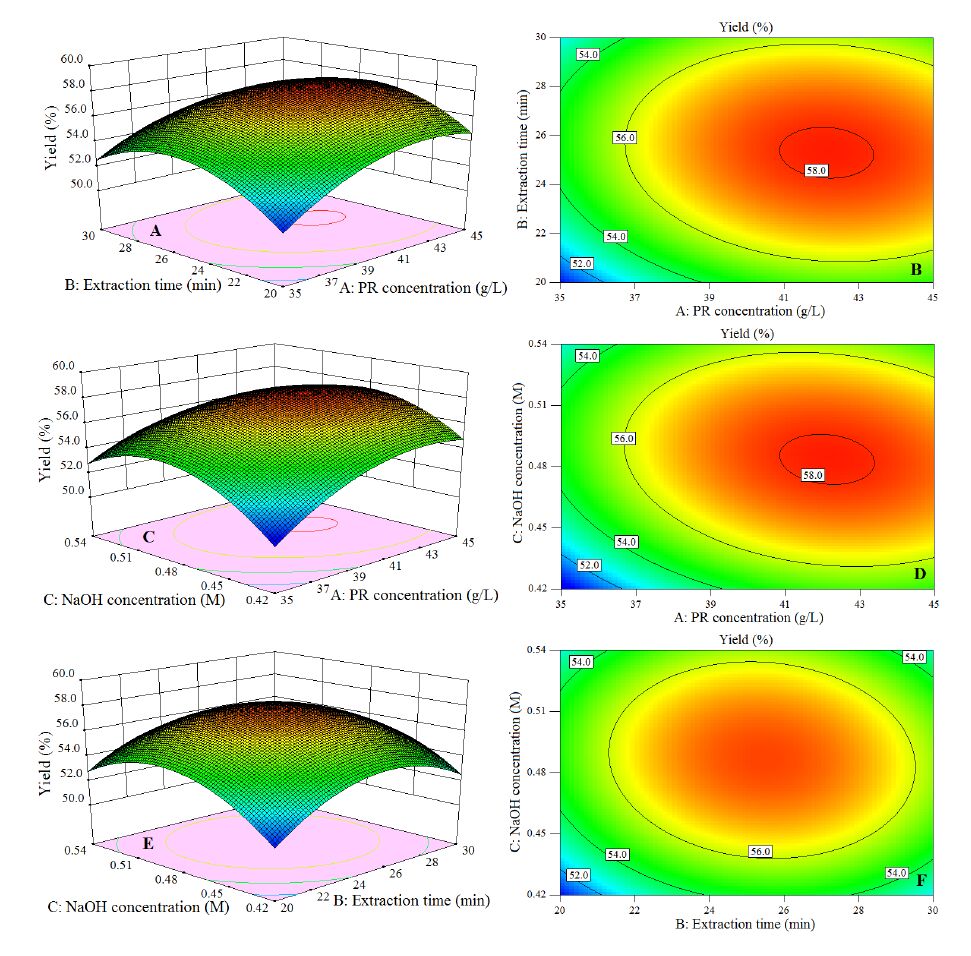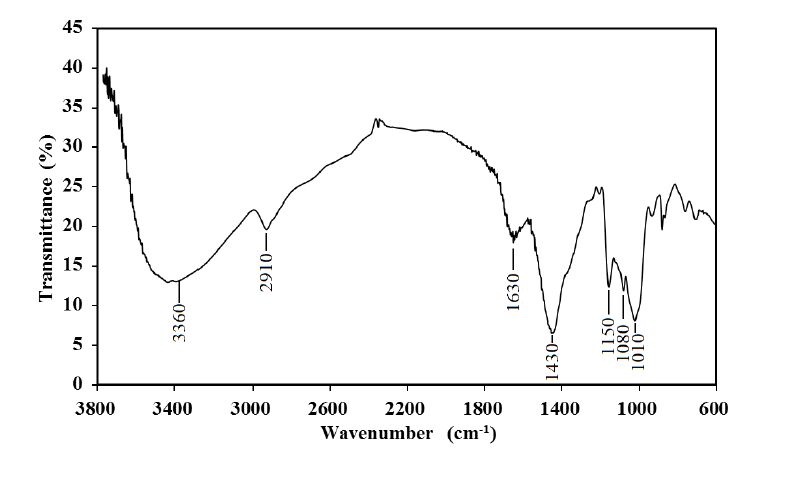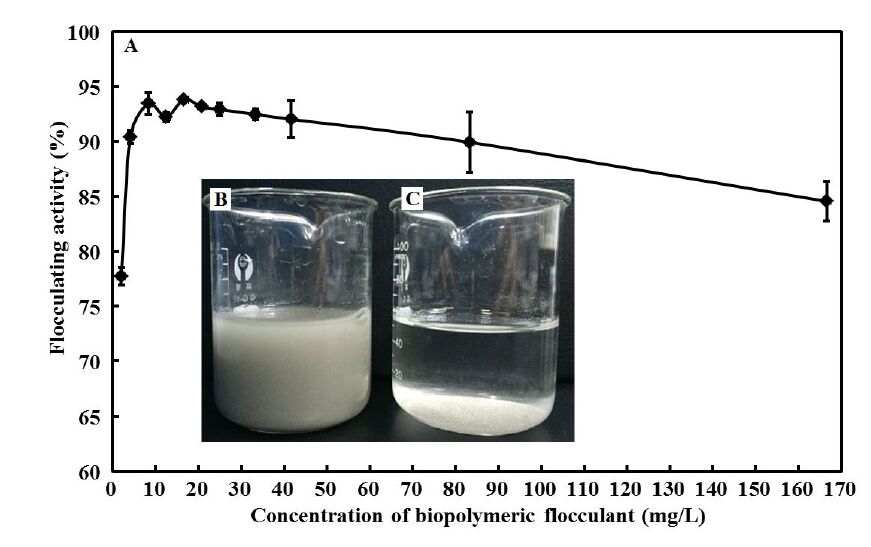1. Introduction
Rheumatoid arthritis (RA) is a chronic inflammatory debilitating autoimmune disease [1]. Cell mediated and humoral immune reactions are involved in pathogenesis of rheumatoid arthritis [2]. The disease is characterized by severe joint inflammations of whole body along with damage to cartilage and bones [3]. Leukocyte infiltration and pannus formation are also responsible for the pathogenesis of RA. Although, the exact cause has not been elucidated still now. Several pro-inflammatory and anti-inflammatory cytokines secreted by immune cells are responsible for the cause of RA. In particular, it was reported that tumor necrosis factor (TNF), interleukin-1β (IL-1β), interleukin-15 (IL-15), transforming growth factor-β (TGF-β), interleukin-6 (IL-6) are important pro-inflammatory cytokines responsible for initiation and progression of RA [4,5]. In view of these findings, modulation of pro-inflammatory cytokines is a desired goal for the management of arthritis.
Most prescribed treatment for RA is a non-steroidal anti-inflammatory drugs (NSAID's). These drugs effectively reduce symptoms of RA, but at same time cause various side effects like gastrointestinal sickness and renal morbidity [6]. Disease modifying anti-rheumatic drugs (DMARD's) and biologics are also prescribed. Biologics are expensive and DMARD's are also associated with severe side effects. Reducing side effects and deleterious effect of antiarthritic drug should be taken into account while designing new therapeutics for RA. One of the possible strategies to suppress systemic inflammation is employment of natural compounds such as botanicals, bioactive food components or functional foods. Along with these, efficacies of various plants extracts and other natural compounds have been exploited for their antiarthritic activity.
Probiotics are ingestible microbial products which when administered in a particular number exert a beneficial effect on host body. These dietary feed supplements are used as probiotics because of their well-known immunomodulatory properties[7,8,9]. Probiotics modulate immune response at gut level. Probiotics are also in use for their antimicrobial, anti-inflammatory and immunomodulatory properties in urinary tract infections [10]. In our previous study we have discovered that L. casei and L. acidophilus has shown potent anti-inflammatory properties in the carrageenan model of acute inflammation [11]. In the present study, anti-inflammatory and anti-arthritic activities were investigated by using collagen induced arthritis (CIA) model. Anti-inflammatory activity of L. casei and L. acidophilus was checked by measuring the mRNA expression of TNF, IL-6 and IL-1β to validate our previous findings of anti-inflammatory activity. Standard anti-arthritic drug indomethacin was used for comparison.
2. Materials and Methods
2.1. Animals
Thirty healthy male Wistar rats, two months old (200 g) were included in this study. Animals were randomly divided into five groups (n = 6). These were purchased from Indian Institute of Toxicology Research (ⅡTR), Lucknow, India and maintained in animal house at Department of Microbiology, Barkatullah University, Bhopal, Madhya Pradesh. Animals were acclimatized for fifteen days before the experiment started. Animals were housed in stainless steel cages and were fed with standard diet purchased from Amrut Feed Ltd, India, given water ad libitum (Principles of Laboratory Animal Care NIH publication no, 85-23, revised 1985) and maintained under laboratory conditions (Temperature 22 ± 2 ℃, Relative humidity 60–70%, and 12-12 hrs light-dark cycle). All procedures and techniques used in this study were in accordance to the ethical committee guidelines.
2.2. Bacterial culture
L. acidophilus (ATCC 314) and L. casei (ATCC 334) were purchased from Hi Media, Navi Mumbai, India. Lyophilized cultures were streaked over De Mann Rogosa Agar (MRS) at 37 ℃ in anaerobic condition.
2.3. Chemicals
All chemical used in this study were of molecular and analytical grade.
2.4. Induction of arthritis and oral treatments
Collagen induced arthritis model was induced by the method given by Remmers [12] with some necessary modifications. Rats were injected intra peritoneally with collagen (Bovine tracheal cartilage type Ⅱ) and incomplete freund's adjuvant on day 1except group Ⅰ animals. Booster doses of the same were injected on the 8th day. Preventive oral treatments were given to all the groups. Oral administration 500 μL of distilled water, 2 × 108 CFU/mL of L. casei, L. acidophilus suspended in 500 μL of distilled water were started on day 1 and continued till the 28th day for group Ⅱ, Ⅳ and Ⅴ group animals respectively. Indomethacin suspended in 500 μL of distilled water was administered at 10 mg/g body weight from day 1 to 28 to group Ⅲ animals [13]. Paw thickness were measured for all the experimental animals at day 0 and at the end of each week with dial gauge caliper.
2.5. Sample collection
On the 29th day, all animals were sacrificed in aseptic conditions. Blood samples were collected to isolate serum for cytokines assay. Right hind paws knee joints were also collected from each animal for RT PCR analysis of mRNA expressions for cytokines.
2.6. ELISA for the cytokines assay
IL-6, TNF, IL-1β (pro-inflammatory cytokines) and IL-4, IL-10 (anti-inflammatory cytokines) (pg/mL) were estimated in serum samples with the help of ELISA Reader (Lisa Plus, Germany). IL-6 and TNF, IL-1β (Ray Bio®) and IL-4 and IL-10 (DNA bio) ELISA kits were used. Assays were performed according to the manufacturer's recommendations.
2.7. Reverse transcriptase PCR analysis
Paws were harvested and homogenized followed by addition of sodium lauryl sarconisate and centrifuged to remove the cell debris. RNA was precipitated by the addition of potassium acetate and acetic acid. Cold absolute ethanol was added for the precipitation of RNA. Total RNA was isolated by RNAzol method (Tel-Test, Friendswood, TX) according to the manufacturer's instructions.
The quantity and purity of RNA were determined by using a spectrophotometer (Shimadzu) at 260 and 280 nm. Samples with ratios > 1.7 were accepted for further analysis. These samples were treated with DNAase (Genei, Banglore, India) to remove the contaminating DNA. One microgram of total RNA from rat knee joint were reverse-transcribed into cDNA using 200 units of M-MLV reverse transcriptase (Invitrogen Co.) in 20 µL of reaction volume. cDNA was amplified in 20 µL of reaction mixture including 10 mM Tris-HCl (pH 8.3), 50 mM KCl, 1.5 mM MgCl2, 0.2 mM dNTP, 0.4 µM each of the 3' and 5' primer and 0.5 U Taq polymerase (Takara Co.) using a PTC-100 Programmable Thermal Controller (MJ Research, Waltham, MA, USA). All primers were designed using the published cDNA sequences and the primer selection software, with the help of web site, Primer 3 (http://www.genome.wi.mit.edu). Primer sequences and operating conditions are given in Table 1. PCR products thus obtained were separated on 1% agarose gel, stained with ethidium bromide, and photographed. Intensities of bands were measured by using ImageMaster VDSTM (Amersham Biosciences, Uppsala, Sweden) with image analysis software, ImageMaster Total Lab TM (Amersham Biosceinces). The amounts of target PCR products were normalized against GAPDH PCR product in the corresponding samples.
Table 1. Table showing primer sequences, operating conditions and PCR product size.
| Gene name |
Oligonucleotide sequence (5'-3') |
Denaturing,
℃ (time) |
Annealing,
℃ (time) |
Elongation,
℃ (time) |
Cycle No. |
Product size |
Gene bank No. |
| mGAPDH |
F-ATGGGAAGCTGGTCATCAAC
R-GGATGCAGGGATGATGTTCT |
94 (30 s) |
58 (30 s) |
72 (60 s) |
30 |
440 |
NM_017008 |
| mTNF |
F-GTCGTAAACCACCAAGC
R-GACTCCAAAGTAGACCTGCCC |
94 (45 s) |
58 (45 s) |
72 (90 s) |
35 |
393 |
AY 427675 |
| mIL-1β |
F-GGCATAACAGGCTCATCTGG
R-CATCATCCCACGAGTCACAG |
94 (45 s) |
58 (45 s) |
72 (90 s) |
35 |
414 |
NM_031512 |
| mIL-6 |
F-CCACTGCCTTCCCTACTTCA
R-TGGTCCTTAGCCACTCCTTC |
94 (60 s) |
63 (60 s) |
72 (120 s) |
37 |
498 |
NM_012589 |
| mIL-4 |
F-ATG CACCGAGATGTTTGTACC
R-TTCAGTGTTCTGAGCGTGGA |
95 (60 s) |
60 (60 s) |
72 (90 s) |
40 |
275 |
NM_201270.1 |
| mIL-10 |
F-GGAGTGAAGACCAAAGG
R-TCTCCCAGGGAATTCAAATG |
94 (30 s) |
57 (1 s) |
72 (60 s) |
40 |
340 |
NM_012854 |
| mGAPDH: human glyceraldehyde-3-phosphate dehydrogenase; mTNF: murine tumor necrosis factor α; IL-1β: interleukin-1β; IL-6: interleukin-6; IL-4: Interleukin-4; IL-10: Interleukin-10 |
2.8. Statistical analysis
The results are expressed as a mean ± SEM of six rats per group. The result obtained from different groups was analyzed by one way ANOVA followed by Bonferroni's Multiple Comparison Test. Data were considered statistically significant if P < 0.0001.
3. Results
3.1. Effect on paw thickness
A significant increase in paw thickness was observed in group Ⅱ animals from 3.46 ± 0.04 to 3.78 ± 0.10 mm from 7th to 28th day while there was no change in the paw thickness (3.16 ± 0.08 mm) observed in group Ⅰ animals from 0 to 28th day. Lactobacillus treatment significantly decreased paw thickness in group Ⅳ and Ⅴ animals when compared with group Ⅱ animals. Paw thicknesses were 3.7 ± 0.16 and 3.48 ± 0.06 mm for group Ⅳ and Ⅴ respectively. A significant decreased in thickness to 3.4 ± 0.04 and 3.08 ± 0.08 mm for Ⅳ and Ⅴ groups at P < 0.0001 was observed on 28th day when compared with group Ⅱ animals. However group Ⅲ animals were also showing a significant decreased in paw thickness of 3.62 ± 0.09 mm on 7th day and 3.2 ± 0.08 mm on 28th day (at P < 0.0001) (Figure 1).
3.2. Cytokine expression in serum
Serum level of IL-6, IL-1β and TNF level were significantly increased in group Ⅱ animals while significantly lower levels of these pro-inflammatory mediators were observed in other counterparts. 63.34 ± 0.18, 178.6 ± 0.27 and 650.1 ± 0.44 pg/mL were found in case group Ⅱ animals for IL-6, IL-1β and TNF respectively (Figure 2). Abrupt decreased in IL-4 and IL-10 level at 63.33 ± 0.57 and 15.7 ± 0.20 pg/mL respectively in case of group Ⅱ animals. Lactobacillus treatment increased serum level of IL-4 and IL-10 in group Ⅳ and Ⅴ animals. Results of group Ⅲ were also found to be statistically significant at P < 0.0001 with group Ⅱ animals (Figure 2).
3.3. Inhibitory effect of L. casei and L. acidophilus on IL-6, IL-1β and TNF mRNA and stimulatory effect on IL-4 and IL-10 mRNA expressions in knee joints
Effect of L. casei and L. acidophilus was investigated by RT-PCR analysis for various cytokines at the transcription level. On the 29th day, mRNA expression levels of pro and anti-inflammatory cytokine level was estimated by total RNA sample prepared from the right hind knee joints. mRNA expressions of IL-6, IL-1β and TNF were stimulated in group Ⅱ animals when compared with other groups and very less expression of IL-4 and IL-10 were observed. Whereas Lactobacillus treatment up-regulated the IL-4 and IL-10 expressions in group Ⅳ and Ⅴ animals. The group Ⅰ animals were showing normal expression for all the cytokines. In case of group Ⅲ animals, IL-1β and TNF were simulated and less expression of IL-6 was observed. Also, IL-4 was stimulated in comparison to IL-10 in group Ⅲ animals (Figures 3 and 4).
4. Discussion
Based on anti-inflammatory properties of L. casei and L. acidophilus in serum [11], it was considered that they both might have shown anti-inflammatory properties at transcription level also. The aim of the present study was to evaluate effect of L. casei and L. acidophilus on expressions of IL-6, IL-1β, TNF, IL-4 and IL-10 mRNA in CIA model of arthritis. When compared with the other experimental models of arthritis, CIA model is a promising model for validation and efficacy of anti-arthritic drugs [14]. Results obtained in this study were similar with our previous findings. L. casei and L. acidophilus significantly decreased the paw thickness in experimental animals when compared with their other counter parts. These treatments significantly decreased the pro-inflammatory and increased the anti-inflammatory cytokines [11]. Collagen induced arthritis is an immune mediated inflammatory reaction. Initial symptoms include paw edema and soft tissue thickening. Lactobacillus is acting as an immunosuppressive agent. Decrease in paw thickness is one of the major factors which evaluate the efficacy of anti-arthritic drugs or therapy. Both L. casei and L. acidophilus decreased paw thickness when compared to other counterparts.
Rheumatoid arthritis is a chronic and devastating autoimmune disorder that leads to persistent, progressive symmetrical inflammation in joints and subsequent erosive destruction of cartilage and bone [15,16]. Anti-arthritic drugs used for treating chronic inflammatory conditions are usually prescribed for long term to properly control the disordered immune system. Thus, there is a strong need to develop safe and effective drugs for the long-term use. Many researchers have studied non-chemical compounds for nonsteroidal anti-inflammatory properties with the aim of developing new treatments for clinical use [17].
Cytokines play major role in the progression of rheumatoid arthritis. An imbalance between pro-inflammatory and anti-inflammatory cytokine activities, favors the induction of autoimmunity, chronic inflammation and thereby joint damage [18]. Mainly IL-1β, TNF, IL-8, IL-12, IL-15, IL-17 and IL-18 are responsible for the inflammatory reaction. Along with these mediators, leukotriene B4 are also implicated in the process and playing a key role in neutrophil recruitment during immune inflammation [19]. TNF responsible for inflammation, differentiation and proliferation of T and B cells and bone resorption [20], whereas IL-1β causes the destruction of cartilage and bones [21]. Blocking TNF suppresses inflammation and ameliorates cartilage destruction while IL-6 is responsible for the joint destruction. Lactobacillus significantly decreased pro-inflammatory cytokine levels in serum. Lactobacillus might suppress the signaling pathway that leads to TNF, IL-1β and IL-6 synthesis. TNF, IL-1β and IL-6 had been considered to have critical roles in RA and CIA in that they promote the production of most other pro-inflammatory mediators [22]. Oral administration of Lactobacillus significantly increased anti-inflammatory cytokines (IL-10 and IL-4) level from serum. IL-10 is a macrophage deactivator and also found to be associated with blocking the synthesis of TNF, IL-1, IL-6, IL-8, and GM-CSF in human monocytes [23] and cox-2 inhibitors [24,25]. IL-4 is pleiotropic T-cell derived cytokine that acts by inhibiting the synthesis of pro-inflammatory cytokines such as IL-1, TNF, IL-6, IL-8 and IL-12 by macrophages and monocytes [26]. Moreover, it also stimulates several cytokine inhibitors such as interleukin-1 receptor antagonist (IL-1Ra), soluble IL-1-receptor type Ⅱ and TNF receptors. In addition, it also suppresses metalloproteinase synthesis and stimulates tissue inhibitor of metalloproteinase-1 production in human mononuclear phagocytes [27,28]. Lactobacillus might offer a complementary therapy, which inhibited pro-inflammatory cytokines whereas up-regulated anti-inflammatory cytokines.
In addition, anti-inflammatory effect of L. casei and L. acidophilus was also validated from the mRNA expression of cytokines from knee joints. mRNA level of IL-6, TNF and IL-1β were highly stimulated in knee joints of arthritic rats, whereas Lactobacillus treatment decreased the level as that of normal rats. Studies have established that IL-6 has an important role in leukocyte recruitment, apoptosis and T cell activation [29]. Additionally, TNF stimulates neutrophils to transcribe and release cytokines and chemokines biosynthesis [30]. Inhibition of TNF, IL-1β and IL-6 release can reduce the severity of inflammation. On the other way, Lactobacillus treatment enhanced the expression of IL-4 and IL-10. L. casei showed similar results in randomized double-blind clinical trial [31]. Consumption of L. casei fermented milk prevented the Salmonella reactive arthritis [32]. Results presented in this study are first to demonstrate that L. casei and L. acidophilus had shown inhibitory effects on the expression of IL-6, IL-1β and TNF and thus possess a potent immunosuppressive and anti-inflammatory activity.
5. Conclusion
We have demonstrated that Lactobacillus possess immunomodulatory property as suggested by RT PCR analysis of various pro-inflammatory and anti-inflammatory cytokines in animal model of experimental arthritis. Lactobacillus has therapeutic anti-arthritic activity as tested in CIA model. Notably, oral administration of Lactobacillus caused suppression of pro-inflammatory cytokines IL-6, IL-1β and TNF along with up-regulation of anti-inflammatory cytokines IL-4 and IL-10 in serum as well as at the transcription level. Also, there was lowering of paw thickness. On the basis of our results in present study, we suggest that Lactobacillus is a promising therapeutic agent or dietary supplement for rheumatoid arthritis.
Acknowledgement
The author would like to thank Department of Microbiology, Barkatullah University, Bhopal for laboratory facility provided to conduct the study.
Conflict of interest
There are nonfinancial competing interests (political, personal, religious, ideological, academic, intellectual, commercial, or any other) to declare in relation to this manuscript.









 DownLoad:
DownLoad: 